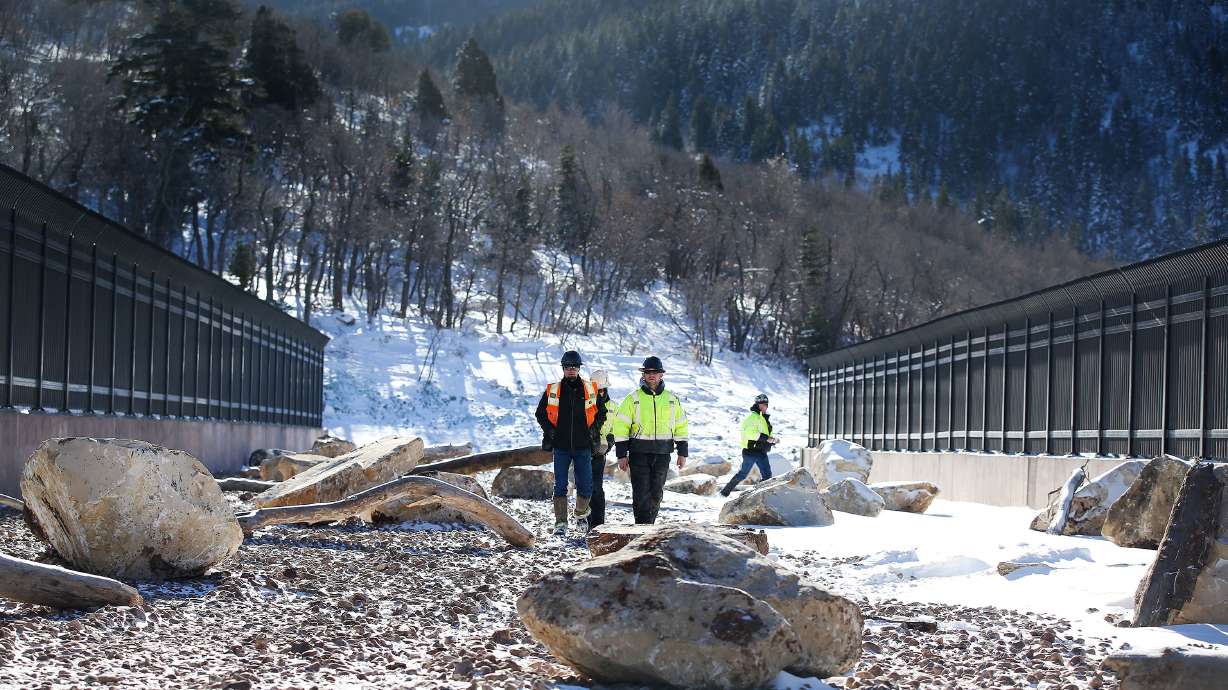Estimated read time: 3-4 minutes
This archived news story is available only for your personal, non-commercial use. Information in the story may be outdated or superseded by additional information. Reading or replaying the story in its archived form does not constitute a republication of the story.
SALT LAKE CITY — A wildlife conservation group new to Utah successfully worked with the state Legislature to get passage of a resolution urging protection and preservation of migration corridors and urging the state to continue its focus on engineered crossings.
Utah, in fact, became the first state in the country to install a wildlife crossing when it did it in 1975 near Beaver.
The crossings are important for both the health of motorists and wildlife, with numbers from 1992 to 2005 that show there were 30,500 wildlife-vehicle collisions across the state, 2,030 injury accidents and 18 human deaths.
Gabby Saunders, campaign communication specialist with Wildlands Network, said studies show that wildlife crossings can reduce collisions from 40% to as much as 90%.
The network, which relocated from Seattle to Utah earlier this year, focuses on improving habitat connectivity that is threatened by urbanization including roadways and fencing.
“Animals need to move between habitats more effectively, and with roads and other barriers we have made that extremely hard,” she said.
The pronghorn, in fact, rarely jump fences and will simply stop their migration and stare at the fence. The network has worked with groups to install fencing that allows the animal to crawl under it, Saunders said.
“We partner with other coalitions to improve that connectivity through creative and beneficial alternatives.”
The network’s efforts via HCR13 have garnered the support of diverse groups that include hunting and fishing organizations, the Utah Division of Wildlife Resources and the Utah Department of Transportation, which last year installed a $5 million wildlife crossing — the state’s first overpass solely for wildlife — on I-80 in Parleys Canyon.
Related:
“If you are barreling down I-80 and an elk walks out in front of you, you’ve lost that fight,” Saunders said.
She added that the trauma of such a collision, if one survives, can linger forever.
Her own brother, when he was 10, was riding in a car with his mother when the vehicle hit a deer.
“It traumatized my brother to this day,” she said.
The resolution, which passed unanimously in both houses, was sponsored by Rep. Mike Schultz, R-Hooper, who describes himself as an avid sportsman and outdoor enthusiast.
“Utah has a proud heritage of being known — and looked to — as one of the premier states in wildlife management and conservation,” he said. “I believe this resolution will help continue that legacy and be greatly beneficial for the long-term stability of the big game herds and fish populations here in Utah.”
The partnership on wildlife crossings is broad.
The Utah Department of Transportation teams up with the Utah Division of Wildlife Resources using its data that is tracking more than 2,000 animals statewide via GPS.
“Besides just figuring out where we should put new crossings, coordinating with (them) allows us to determine what type we should build — an overpass or a tunnel,” said UDOT spokesman John Gleason. “We work with them to identify the right type for each project.”
If you are barreling down I-80 and an elk walks out in front of you, you’ve lost that fight.
–Gabby Saunders, Wildlands Network campaign communication specialist
The agency has installed multiple crossings throughout Utah, including three separate crossings on U.S. 191 near Monticello and on U.S. 89 east of Kanab.
In 2011 improvements to U.S. 6, including wildlife crossings, earned a national award.
“It’s been great to see how effective these have been at reducing crashes and how extensively they’re being used by wildlife,” Gleason said, adding that photos and videos from some of the crossings showed nearly 100 deer walking under a highway.
Saunders said facilitating the safe movement of animals during their migration is important not only for motorists but for conservation.
Road mortality is a top threat to 21 federally listed species needing protection and every day in the United States, one million vertebrates die on roadways, Saunders said.
“We thought it was important to start a conversation with lawmakers with this resolution about the importance of improving habitat connectivity and motorist safety,” she said.











